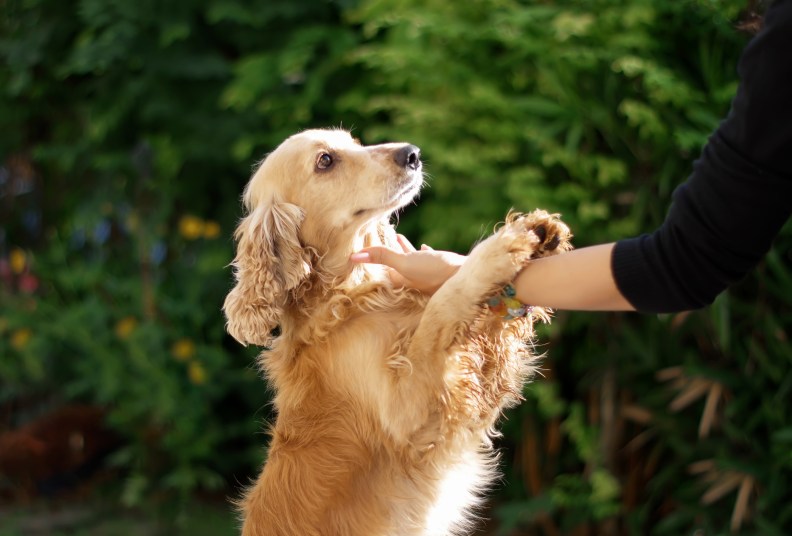19 Common Dog Gestures and What They’re Trying to Tell You

As dog owners, we think we know a lot about our furry friends — but there’s more to dog speak than just tail wags and woofs. Researchers studying animal cognition have discovered our pups actually use the same specific gestures to let us know what they want. And while this isn’t the same as having an actual conversation with your dog, it’ll save you the frustration of asking “What do you want?” 15 times.
Hannah Worsley, PhD, and Sean O’Hara, PhD, from the University of Salford in England, looked at 242 recordings of 37 different pets to create a list of “referential gestures.” These gestures are “used by a signaller to draw a recipient’s attention to a specific object, individual or event in the environment.” While researchers have studied referential gestures in the animal kingdom — “great apes [have been] shown to possess impressive gestural repertoires” — few have looked into non-primates’ gestures.
To shed some light on this interesting topic, Worsley and O’Hara noted 47 different referential gestures, with pups frequently using 19 of those. The researchers divided possible dog rewards (aka the reason a dog was making the gesture) into four categories: “Scratch me” (1), “Give me food/drink” (2), “Open the door” (3), and “Get my toy/bone” (4).
Dog Behaviors and What They Mean
- Roll over (1)
- Head forward (1, 2, 3)
- Nose (1, 2, 3, 4)
- Paw (1, 2, 3, 4)
- Paw hover (1, 2, 3, 4)
- Head turn (1, 2, 3, 4)
- Lick (1, 2, 3, 4)
- Head rub (1)
- Paw rest (1, 3)
- Hind leg stand (2, 3, 4)
- Front paws on (1, 2, 3, 4)
- Jump (2, 3, 4)
- Head under (1, 2, 4)
- Paw reach (4)
- Crawl under (4)
- Chomp (1)
- Shuffle (1)
- Back leg up (1)
- Flick toy (2)
The reseachers noted some limitations of the study included a dog’s prior training. If Fido hasn’t been taught to jump, he may be less likely to exhibit that behavior when he wants something. Prior study also indicates that dogs in larger households are more likely to have larger gesture repertoires because they have more people with whom they can practice and ultimately trick into giving them more belly rubs and dog biscuits.
Next time you’re not sure what your pup wants, look at what he or she is doing as an indicator. Now you really can basically speak their language!
Watch the video below to see cute dogs before and after they’re told what good boys they are:
More From FIRST
No, Your Pup Isn’t Going to Give You the Dog Flu — But You Should Get Him to a Vet
Yes, There’s a Heimlich Maneuver for Dogs — And Knowing It Could Save Your Pup’s Life
















